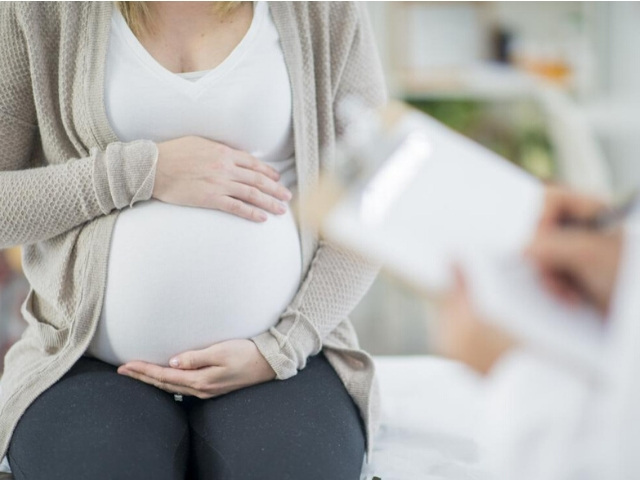Hydronephrosis is a common condition that affects pregnancy. This condition involves one or both kidneys. Hydronephrosis exerts pressure on the kidneys due to which kidneys might be damaged.
Hydronephrosis is a condition in which there is a blockage in the tube which connects kidney to the bladder. This blockage in the urinary tract may be due to kidney stones or an enlarged prostate. Due to this obstruction urine cannot reach bladder which results in swelling of the kidney. Hydronephrosis may be unilateral or bilateral depending on the location and cause of obstruction.
The following article describes causes, symptoms and treatment of Hydronephrosis in pregnancy.
All You Need to Know About Hydronephrosis in Pregnancy
What is Hydronephrosis?
Hydronephrosis is a condition in which the urine collecting system of the kidney dilates. This situation may be normal or it may be due to any underlying medical condition. A normal kidney filters the waste products from the blood and disposes it into the urine. The urine drains into the bladder through a connecting duct known as the ureter.
The blockage is the most frequent cause of Hydronephrosis, it may be a physiological response to pregnancy or due to problems in the fetus which are congenital. Hydronephrosis or hydroureter affects a large proportion of pregnant women. This effect on pregnancy is due to progesterone hormone which decreases the tone of ureters.
Due to this condition, the physiological function of the kidney decreases. There is structural damage to kidney cells and a decrease in blood filtration rate because of increased pressure of extra fluid within the kidney. This decreased function of the kidney can be reversed if treated on time, but if the condition remains for a longer time then the damage is often permanent.
In pregnancy, Hydronephrosis is seen in the second trimester, particularly between the 26th and 28th weeks. This condition disappears on its own after delivery within six weeks. Sometimes it may persist and requires medical care.
Causes of Hydronephrosis in Pregnancy
Causes of Hydronephrosis are categorized as:
- Intrinsic causes (cause within the urinary collecting system)
- Extrinsic causes (outside the collecting system)
- Functional causes
- Intrinsic Causes
- Kidney stones: The most common cause of unilateral hydronephrosis. This stone gradually moves to the bladder but if it lodge in the ureter then the urine will flow backward and cause swelling of the kidney.
- Clots in blood
- Scarring or stricture
- Cancer of the bladder
- Bladder stones
- Contracture in the neck of bladder
- Urinary retention
- Strictures in urethra
- Urethral cancer
- Extrinsic Causes
- Retroperitoneal fibrosis
- Prostate cancer
- Tumors that compress ureter like lymphoma and sarcoma
- Cervical cancer
- Pregnancy
- Uterine prolapse
- Hypertrophy of prostate
- Radiation therapy which leads to scarring
- Ovarian vein syndrome
- Functional Causes
- Neurogenic bladder because of damage to the nerves that supply it. This can be seen in brain tumors, multiple sclerosis, spinal cord injuries and diabetes.
- Vesicoureteral reflux in which urine flows back into the ureter from the bladder.
Symptoms of Hydronephrosis in Pregnancy
Symptoms of Hydronephrosis are not much but if this condition occurs then the following symptoms may be noticed. This condition affects more in pregnancy. If following symptoms are noticed in pregnancy then medical help should be taken.
Symptoms are as follows:
- Blood in urine
- Fever
- Less urination
- Pain in back and abdomen
- Nausea and vomiting
- Urinary tract infections(UTI)
- Colicky pain
- Chest pain
- Swelling mainly in the legs
- Sweating
- Difficulty in breathing
- Muscle spasm
Diagnosis of Hydronephrosis in Pregnancy
The diagnosis depends on the history of the symptoms that the patient experiences. The health care practitioner will ask the questions that decide if any further investigation is required or not. The patient’s past history and family history may also be helpful in diagnosis.
Tenderness in the flank is revealed on physical examination. When the abdomen is examined there will be distension in the bladder. In males, to assess the size of the prostate rectal examination is done. In women to evaluate the uterus and ovaries, a pelvic examination is performed.
Laboratory Tests
The following laboratory tests may be done:
- Urine analysis is done for blood, infection or abnormal cells
- Complete blood count(CBC) is done to check anemia
- For chronic hydronephrosis electrolyte analysis is done as kidneys are responsible for electrolyte balance in the blood
- Blood urea nitrogen (BUN), creatinine and glomerular filtration rate are checked to assess the kidney function
Imaging Studies
- Ultrasound is an imaging study that can be done for hydronephrosis. Ultrasound is a non-invasive and quick procedure for screening and is also useful in pregnancy where radiations are matter of concern
- CT scan of the abdomen can be performed to diagnose hydronephrosis. Underlying causes like kidney stones or structures that compress the urine collecting system can be diagnosed by the health care worker. CT scans may be done with or without contrast dye or with or without oral contrast depending upon the situation and health care worker’s care.
- To classify kidney stones as radiodense or radiolucent some urologists used KUB X-rays. KUB X-rays can also be used to determine whether the stone migrates from ureter to the bladder or not.
Treatment for Hydronephrosis
The aim of treatment is to restart the free flow of urine and to decrease swelling of the kidneys. The initial aim of the treatment is to relieve pain and prevent urinary tract infections.
There are following steps for treatment:
- The first step is to use a catheter to drain the urine from the bladder just to relive the pressure of the kidneys.
- The next step is to rule out the cause of the blockage. Treatment at this step differs from the cause.
- Analgesics and antibiotics or pigtail insertion are used as a treatment of pregnancy-related hydronephrosis.
- The most common treatment for kidney stones is Shock wave lithotripsy (SWL or extracorporeal shock wave lithotripsy).
- A stent may be placed into the ureter by a urologist which bypasses the obstruction and allows the urine to flow from the kidney.
Prevention
The following are some methods of prevention from Hydronephrosis during pregnancy.
- Regular checkups.
- Regular scanning of kidneys along with blood and urine tests to scan for infections.
Conclusion
Hydronephrosis can be a painful condition in pregnancy because of pressure on the kidneys. Symptoms of this condition can cause lot of discomfort during pregnancy, so if a pregnant lady experiences any symptoms like urinary retention, fever, colicky pain etc. then she should consult to her doctor.













